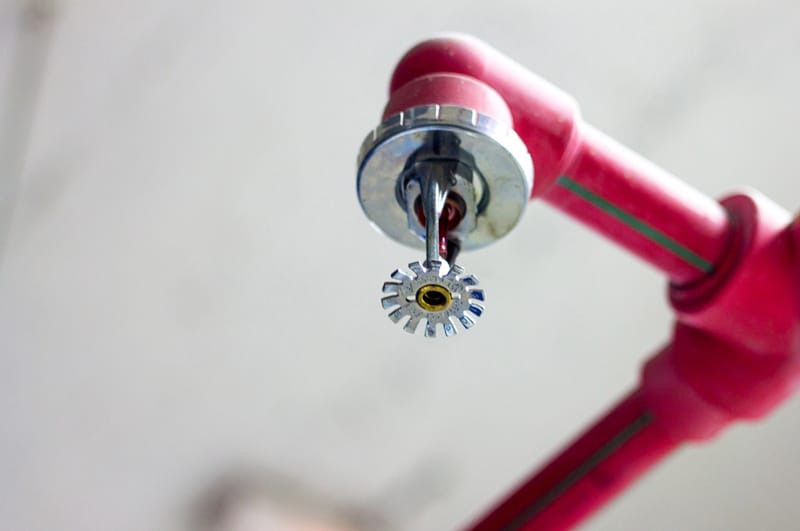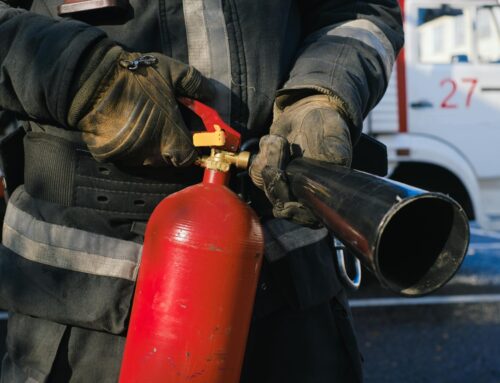Fire sprinklers are a critical component of fire protection systems, designed to suppress fires before they spread and cause severe damage. Many people believe that fire sprinklers are triggered by smoke, causing all sprinklers to activate at once—this is a common myth. In reality, fire sprinklers are activated individually by heat, ensuring targeted fire suppression.
In this article, we’ll break down how fire sprinklers work, the different types of systems, and why they are essential for fire safety.
How Do Fire Sprinklers Detect and Suppress Fires?
Fire sprinklers operate through a simple but highly effective process:
1. Heat Triggers the Sprinkler Head
Unlike smoke alarms, which detect smoke, fire sprinklers respond to high temperatures. Each sprinkler head contains a heat-sensitive element, typically a glass bulb filled with liquid or a fusible metal link. The liquid inside the glass bulb expands as the temperature rises. Once the air around the sprinkler reaches 135-165°F (57-74°C), the bulb bursts, or the metal link melts, activating the sprinkler.
2. Water is Released to Suppress the Fire
When the heat-sensitive element is triggered, it opens the valve that holds back pressurized water in the piping system. Water is released immediately and sprayed over the fire in a controlled pattern to cool the flames and prevent fire spread.
3. Only the Necessary Sprinklers Activate
A common misconception is that all fire sprinklers in a building activate at once. However, only the sprinkler(s) directly above the fire will activate, targeting the affected area and minimizing water damage.
4. Fire Sprinklers Control the Fire Until Help Arrives
Fire sprinklers can suppress or completely extinguish fires before firefighters arrive, significantly reducing property damage and saving lives.
Types of Fire Sprinkler Systems
Not all fire sprinklers operate the same way. The type of system installed depends on the building type, fire risks, and environmental conditions.

1. Wet Pipe Sprinkler System
- The most common type of fire sprinkler system.
- Pipes are filled with water at all times, ensuring an immediate response when a sprinkler head is triggered.
- Ideal for office buildings, homes, and commercial properties.
2. Dry Pipe Sprinkler System
- Pipes are filled with pressurized air or nitrogen instead of water.
- When a sprinkler head activates, the air is released first, allowing water to flow.
- Used in unheated areas like parking garages or warehouses where pipes could freeze.
3. Pre-Action Sprinkler System
- Similar to a dry pipe system but requires a separate detection system (like a smoke or heat detector) to activate water flow.
- Helps prevent accidental water discharge.
- Used in places with valuable assets, like data centers or museums.
4. Deluge Sprinkler System
- All sprinkler heads are open, and water is released through the entire system when activated.
- Designed for high-hazard areas like chemical storage facilities and industrial plants.
Why Are Fire Sprinklers Essential?
Fire sprinklers are one of the most effective fire protection measures available. Here’s why they are crucial for fire safety:
- Fast Response – Sprinklers activate within seconds of detecting a fire.
- Life-Saving Technology – The National Fire Protection Association (NFPA) reports that sprinklers reduce fire-related deaths by 87%.
- Property Protection – Fire sprinklers can prevent catastrophic damage, reducing repair costs and business downtime.
- Code Compliance – Many commercial buildings are legally required to have fire sprinkler systems installed and maintained.
How to Maintain and Test Fire Sprinklers
Proper maintenance and regular testing are essential to ensure fire sprinklers function correctly in an emergency. Neglecting maintenance can lead to blockages, corrosion, or malfunctions that put lives and property at risk.
1. Perform Visual Inspections
- Check sprinkler heads for dust, corrosion, or obstructions.
- Ensure there are no painted or damaged sprinkler heads.
- Verify that nothing is blocking the spray pattern, such as furniture or decorations.
2. Conduct Routine Testing
- Fire sprinkler systems should undergo quarterly and annual inspections by a certified fire protection professional.
- Water flow tests should be conducted to ensure proper pressure and distribution.
- Alarm testing verifies that the system communicates correctly with monitoring services.
3. Flush the System to Prevent Clogs
- Over time, debris or sediment can accumulate in pipes, reducing effectiveness.
- Flushing the system removes buildup and keeps pipes clear for water flow.
4. Ensure Adequate Water Supply
- Sprinklers rely on a constant water source. Check that water valves are open and unobstructed.
- In buildings with fire pumps, ensure they are operational and tested regularly.
5. Schedule Professional Inspections
- NFPA 25 mandates that licensed professionals inspect and service fire sprinkler systems at least once a year.
- Professional inspections identify leaks, corrosion, or necessary repairs before they become serious problems.
Trust Ideal Fire Services for Your Fire Sprinkler Needs
At Ideal Fire Services, we specialize in fire sprinkler installation, inspection, maintenance, and repairs to keep your property protected and compliant with fire safety codes. Whether you need a new system installed or an inspection of your existing sprinklers, our expert team is here to help.
📞 Contact us today to schedule a consultation and ensure your fire protection system is ready when you need it most!

